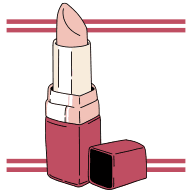What Are Effective Negotiation Strategies for Cosmetics Buyers?
Discover the art of deal-making in the cosmetics industry through this comprehensive guide, enriched with wisdom from seasoned buyers and suppliers. Unpack effective strategies that can lead to better pricing, stronger partnerships, and more flexible payment terms. Gain a competitive edge by understanding how to commit to larger orders, build long-term relationships, and leverage volume commitments to your advantage.
- Commit to Larger Orders with Phased Payments
- Build Long-Term Partnerships with Suppliers
- Leverage Volume Commitments for Better Pricing
Commit to Larger Orders with Phased Payments
One of the best ways I've negotiated with suppliers is by committing to a larger order but splitting payments over time. Instead of ordering small batches, I lock in a bigger total order (which gets me a lower price per unit) but arrange to pay in phases-like 30% upfront, 30% at the first shipment, and the rest later.
This works because suppliers love guaranteed business, and I don't have to tie up all my cash at once. It's helped me keep costs down, improve cash flow, and get priority production. Plus, once you build that relationship, they're more willing to work with you on better terms in the future.
Build Long-Term Partnerships with Suppliers
In my experience, successful supplier negotiations are all about building relationships and finding win-win solutions. One strategy that's been particularly effective for us is what I like to call the "long-term partnership approach." Instead of focusing solely on driving down prices for immediate gains, we've prioritized creating mutually beneficial, long-term relationships with our suppliers. Here's how it works: We approach negotiations with a collaborative mindset, openly discussing our business goals and growth projections with potential suppliers. We share our vision for Blossom (rough timelines for growth into new markets, new product lines, etc.) and how we see the supplier fitting into that picture. In return, we ask about their goals and challenges. This transparency allows us to identify areas where our interests align and find creative solutions that benefit both parties. For example, we might commit to larger order volumes over time in exchange for better pricing or exclusive product formulations. This strategy has paid dividends for us in a variety of ways. Firstly, it's helped us secure more favorable terms without resorting to hard-bargaining tactics that can strain relationships. We've gained access to higher-quality ingredients and innovative formulations, which has directly contributed to the effectiveness of our products - something our customers definitely notice and appreciate. Additionally, these strong supplier relationships have provided us with more flexibility during supply chain disruptions (hello, pandemic!), ensuring we can keep our virtual shelves stocked even when others are struggling. Ultimately, it's allowed us to maintain competitive pricing while offering superior products, which has been key to Blossom's growth in what has become quite a crowded and uber-competitive market.

Leverage Volume Commitments for Better Pricing
I leverage volume commitments to secure better pricing. By bundling purchases across multiple SKUs, I negotiate bulk discounts while ensuring flexibility in delivery schedules. This lowers per-unit costs without overstocking. For example, when launching a new skincare line, I locked in a 15% discount by committing to quarterly orders instead of a single large purchase. This preserved cash flow, reduced storage costs, and strengthened supplier relationships. The key is showing suppliers long-term value while maintaining agility in inventory management.



